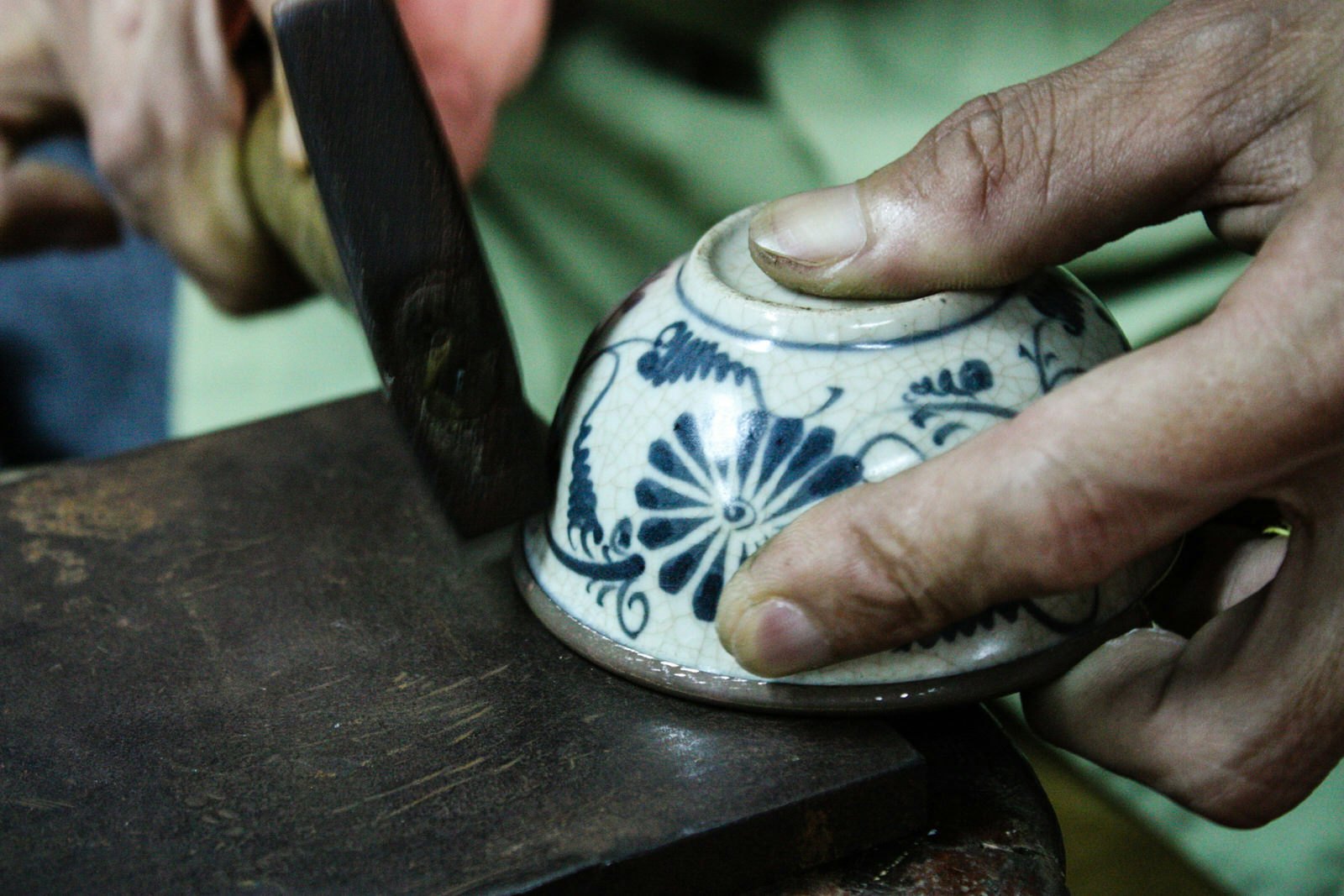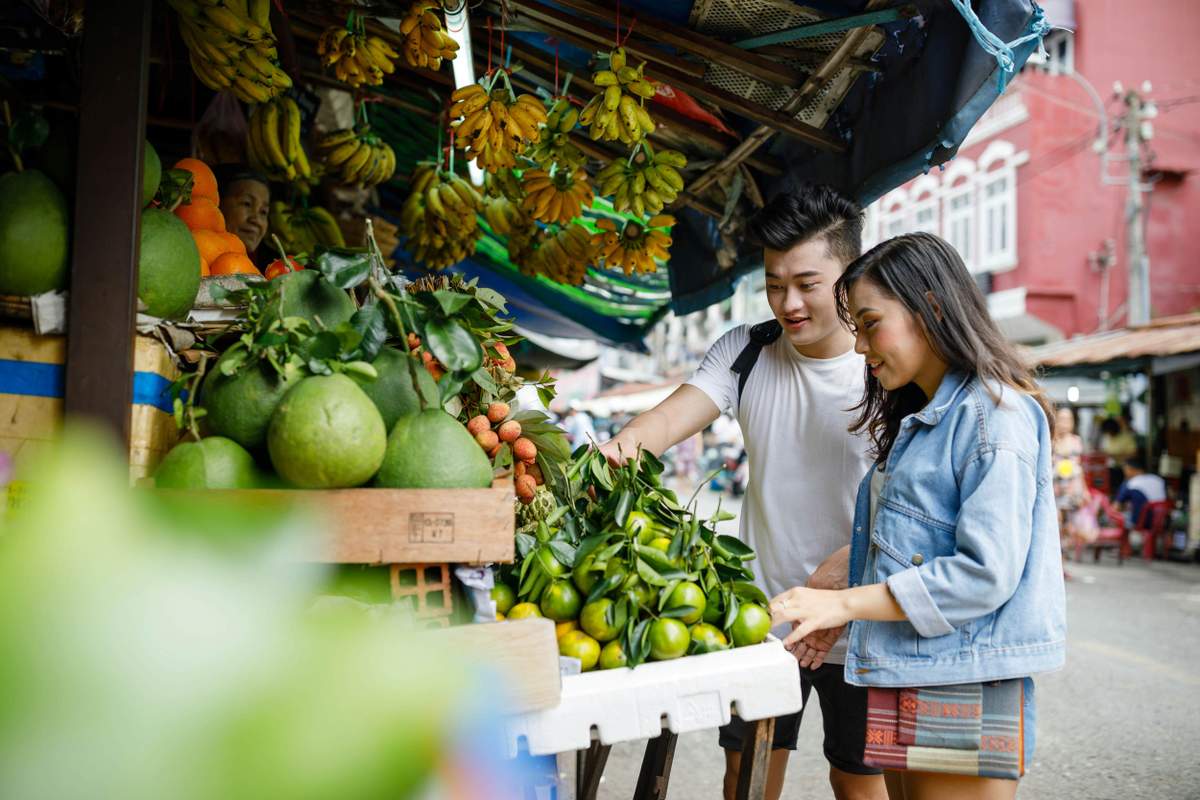
Born in 1923, Mrs Phu still throws pottery in Thanh Ha Village, near Hoi An © James Pham / Lonely Planet
Located where the Thu Bon river meets the sea, Hoi An was one of Asia’s premier trading ports for much of its history, and artisans from all over Vietnam migrated here. Single-craft villages were established nearby to supply international trade as well as the town itself.
When the mouth of the Thu Bon silted up in the late 1800s, the town’s fortunes also dried up, and most of the artisans dispersed. But Hoi An’s wonderfully preserved, Unesco-recognised Old Town has brought it a new set of admirers, and visitors and artisans have returned. Pottery, woodwork, paper craft, photography and paintings can all be found in this picturesque town with a unique history.

Silks, tiles and mean vases
Ancient Hoi An was known for making high-quality silks and ceramics, from fine vases to the clay tiles that still adorn the town’s historic shophouses. While you'll find no shortage of silks in Hoi An's hundreds of tailor shops, the silk-making trade has largely moved elsewhere. However, you can still see the entire fascinating process, from worm to textile, at the Hoi An Silk Village. A visit to the Museum of Trading Ceramics, just by the covered Japanese Bridge, reveals the intercultural exchange of ceramics, showcasing Vietnamese wares that found their way as far as Egypt as well as pottery from 13th to 17th century China, Japan, and the Middle East discovered in and around Hoi An.
Pottery is still made the traditional way in the 16th-century village of Thanh Ha, just 3km west of the Old Town on the Thu Bon. Several homes here still hand-make pottery using a foot-powered potter’s wheel and locally sourced clay. One of the workshops is presided over by nonagenarian Mrs Phu, who can still throw a mean vase along with her children, grandchildren and great-grandchildren. While the large water urns and other bulky household items of Mrs Phu’s youth have now been replaced by smaller, travel-friendly decorative items, it’s fascinating to see these traditional methods in action.

Woodworking
Hoi An’s Old Town has over a thousand traditional timber frame buildings, many with carved pillars and intricate decorative panels, and a walk through the district reveals the importance of woodworking to Hoi An.
The carpentry village of Kim Bong, across the Thu Bon from the Old Town on Cam Kim Island, retains this centuries-old craft in its many forms. The rhythmic tapping of mallets and chisels provide a soundtrack for a walk through a rustic village where craftsmen work on everything from shipbuilding to furniture-making. Artisans can be seen creating wonderfully ornate statues of all sizes highlighting the natural properties of the wood they’re working with. It’s also fascinating to watch the incredibly time- and labour-intensive art of inlaying mother-of-pearl, where the artisan will hollow out a design in the wood to fit carved pieces of iridescent shell.

Craft workshops
You don’t have to leave town to find craft workshops fashioning goods out of paper, silver, wood and other materials. One of the most popular is Reaching Out, a social enterprise providing opportunities for people with disabilities. There’s a workshop in back of the retail space where visitors are welcome to watch as the artisans show off their skills in metalworking, lacquer making, paper crafts and more. Just drop in to watch or book a tour with an English-speaking guide. There are also craft classes available if you’d rather do instead of watch.

Photography and peace
Hoi An’s tiny laneways, artfully faded ochre-coloured walls and lantern-lit evenings provide the ultimate atmospheric backdrop for photography. Capturing the town’s spirit is French photographer Réhahn. With nearly 500,000 Facebook fans, Réhahn is known for his intimate portraits, especially of the young and old, that connect viewers with the people of Hoi An, rather than its buildings. Réhahn credits the tranquility of Hoi An – where a 10-minute motorbike ride can take you from the tourist-filled Old Town to the beach or countryside – for his soulful images. ‘Here, I have more time, there’s not much distraction,’ he says. ‘There’s also the ocean not far away. Personally, I feel peaceful here and every artist needs to be good in his mind before starting to work.’
See examples of his work in his gallery and as a bonus, head to the Precious Heritage Museum in the back (free entry) with photos, stories, and costumes from most of Vietnam’s 54 ethnic groups personally collected by Réhahn over the past eight years.

Visual art
Also inspired by the laid-back pace of Hoi An along with its unique history is Bridget March. The author of illustrated books about life in Sapa, Hoi An, and Saigon, the British visual communicator moved to Hoi An from Ho Chi Minh City in 2017 to open her own gallery which showcases her work as well as that of other Vietnam-based artists. ‘There’s clean air here, and a gentler way of life,’ she says. ‘It’s jolly difficult to be creative in Saigon because just as you find somewhere quiet, someone builds an 18-story block next to you.’
Bridget’s newer etchings, watercolours and acrylic paintings draw inspiration from the colours, patterns and rhythms of Hoi An, incorporating maps of the town along with symbols and patterns that speak to the town’s storied 3000-year-long history.

Where art meets food
While there are artists and workshops scattered throughout Hoi An’s Old Town, a short stretch of Phan Boi Chau Street is turning into somewhat of an artists’ community. There are already five galleries, several photographers, painters and designers, and even a lacquer artist on this pedestrian-friendly stretch just east of the Hoi An Market.
Bringing it all together is Art Space at the Anantara Hoi An Restaurant, a gallery-cum-restaurant that also hosts movie nights and arts and crafts workshops. The space itself is stripped down to industrial glam with exposed brick and raw cement to showcase the works of about a dozen Vietnam-based artists. The collection is eclectic, ranging from contemporary wood sculptures from the nearby H’re ethnic group to woodcuts from UK artist Jack Clayton and emotion-filled abstracts done up in Flauvist-style by colourist Do Nhu Tuan. While perusing the gallery, fill up on a menu that is equally artsy, including wood-fired pizzas inspired by Vietnamese banh mi or Korean gochujang and desserts from Vietnam’s first and only 3D food printer.
https://shop.lonelyplanet.com/products/vietnam-travel-guide-14
Plan with a local





